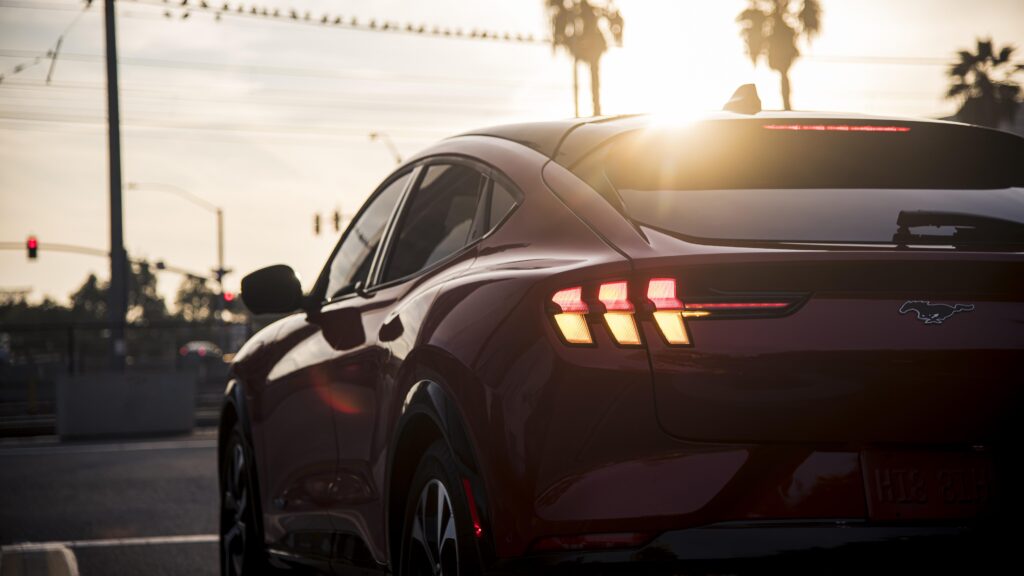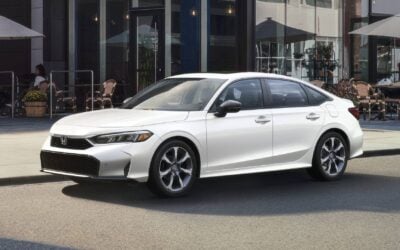
Summer is nearly here, and for many, that means more time on the road. But before you hit the highway, take a moment to get your car summer-ready.
From rising temps to sudden downpours and road trip miles, summer driving puts a unique kind of stress on your vehicle. The good news? A few simple steps now can prevent big problems later—and save you money along the way.
Here’s how to prepare your car for the summer season, in order of what matters most.
1. Check Your Tire Pressure (and Adjust for Heat)
As temperatures rise, so does your tire pressure—about 1 PSI for every 10°F increase. Driving with overinflated or underinflated tires not only affects fuel efficiency but also increases the risk of a blowout.
What to do:
- Check tire pressure in the morning when tires are cool. If your car has a digital tire gauge, it’s easy to monitor it often.
- Compare the readings to your car’s recommended PSI (found inside the driver’s door jamb).
- Adjust as needed and check regularly throughout the season. Driving with overinflated tires not only leads to uneven tire wear, it can be dangerous.
Seasonally checking your tire pressure is especially important for drivers in regions with both extremes: hot summers and cold winters.
2. Inspect Tire Tread and Rotate if Needed
Rain is common in many regions during summer, and worn-out tires make hydroplaning far more likely. Take this step extra seriously if there’s the slightest change you’ll be on the road during a thunderstorm this summer.
What to do:
- Perform the penny test: Insert a penny into your tread with Lincoln’s head upside down. If you can see all of it, it’s time for new tires.
- Look for uneven wear. If spotted, rotate your tires or schedule an alignment.
- Make sure your tires are rain-ready—especially if you’re expecting wet weather where you live.
3. Inspect and Replace Windshield Wipers
Your wipers take a beating year-round, and they’re your first line of defense in a sudden summer thunderstorm. If they’re skipping, streaking, or chattering, it’s time to swap them out.
What to do:
- Replace wipers if they’re cracked, dry, or over 6–12 months old.
- Upgrade to hybrid or summer-specific blades for improved performance in heat and rain.
- Don’t have your wipers replaced at the dealership. Doing so will cost you much more than you should be paying.
4. Check and Recharge Your A/C System
There’s nothing worse than discovering your A/C isn’t working on a 90-degree day. Catch issues now before you’re stuck sweating in traffic.
What to do:
- Run your A/C on full blast—if it’s not blowing cold, it may need a recharge or repair.
- Listen for strange noises and sniff for musty odors, which could mean mold or leaks.
- Have a trusted mechanic inspect the system if you notice anything off.
5. Replace Cabin and Engine Air Filters
A clean cabin air filter improves airflow and air quality, especially during allergy season. And your engine air filter? It helps your car ‘breathe’ better and run more efficiently.
What to do:
- Replace the cabin air filter (usually behind the glove box) if it’s dirty or hasn’t been changed in the last 12,000–15,000 miles.
- Swap out the engine air filter too—it’s a quick DIY job that can save you $50–$100 compared to shop prices.
6. Check and Top Off All Fluids
Summer driving puts extra strain on every part of your vehicle—and your fluids are your car’s lifeblood.
What to do:
- A good first step is to check your vehicle service schedule in your maintenance manual. You can usually find this in your glovebox, but they’re also available for free online.
- Check your coolant (essential for preventing overheating), oil, brake fluid, transmission fluid, and windshield washer fluid. Auto shops and dealership service centers often offer coupons for these types of service checkups.
- Top off or flush anything that’s low or dirty.
- Choose bug-resistant washer fluid for better visibility on long trips.
7. Test Your Battery
Heat kills batteries faster than cold does. If your battery is on the older side, summer is when it’s most likely to give up.
What to do:
- Get your battery tested at an auto parts store or use a multimeter. Many auto parts stores (like Auto Zone, Advance Auto Parts, and O-Reilly) will check your battery for free.
- Clean corrosion off the terminals with a wire brush and baking soda solution.
- It’s a good idea to replace the battery if it’s more than 3–5 years old, especially if you expect to do plenty of driving this summer. Make sure to recycle it wherever you purchase your new battery.
8. Inspect Belts and Hoses
Belts and hoses are often overlooked, but they’re vulnerable to cracking and swelling in hot conditions.
What to do:
- Look for fraying, soft spots, or visible cracks.
- Squeeze hoses gently—if they feel mushy or brittle, replace them.
- Address any squealing noises ASAP; that’s often your serpentine belt asking for attention.
- Not sure what you’re looking for? Ask your trusted auto repair shop to have a look for you.
9. Pack a Summer Emergency Kit
Even the best-prepared vehicles can hit a snag. A stocked emergency kit can turn a bad day into a manageable one.
What to include:
- Water, non-perishable snacks, sunscreen
- Jumper cables and flashlight
- First aid kit
10. Consider Window Tinting for UV and Heat protection
Window tinting isn’t just for looks—it keeps your interior cooler and prevents your dashboard and seats from sun damage.
What to do:
- Choose high-quality ceramic or UV-blocking tint.
- Check your local laws for legal tint percentages.
- You’ll reduce A/C usage, stay more comfortable, and extend the life of your interior materials.
Bonus: protect Yourself from Costly Breakdowns with an Extended Warranty

Planning extra miles this summer? Don’t let one breakdown ruin your vacation—or your budget.
Why it matters:
- Repairs like a failed A/C compressor or radiator leak can cost thousands.
- If your manufacturer warranty has expired, this is the perfect time to consider protection.
- CarEdge offers extended warranty coverage that’s transparent, affordable, and fairly priced—often saving you hundreds compared to dealers.
👉 Get your warranty quote in just a few clicks
Don’t Let Summer Catch You Off Guard
Your car doesn’t need a full overhaul to be summer-ready—but it does need your attention. A few minutes of maintenance can make a huge difference in your driving experience, fuel efficiency, and repair bills. Summer is also a great time to buy or lease a car. CarEdge’s consumer advocates can help you save more and stress less in 2025. We’re simply here to help!













0 Comments